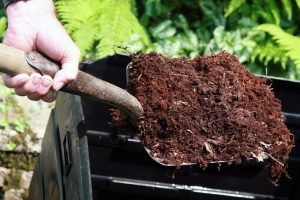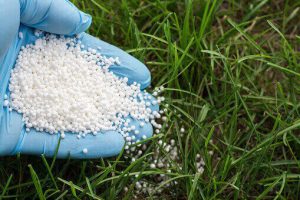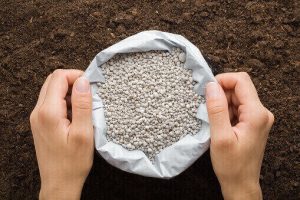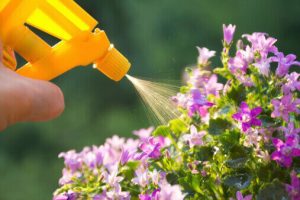Flowering plants require an essential amount of macronutrients and micronutrients to thrive or grow. While some flowering plants may require specific macronutrients that help to boost flowers, others may require nutrients that equally support strong root growth and stem growth. This article discusses some of the best fertilizer for flowers.
When choosing the organic fertilizer for flowering plants, you should consider flower fertilizers or all-purpose fertilizers that include a good proportion of N, P, K. N P K stands for macronutrients; Nitrogen, Phosphorus, and Potassium respectively. Each macronutrient plays an essential role in the proper growth of flowering plants. While Nitrogen helps in boosting the rich green color and length growth, phosphorus helps in boosting root development, flower buds, fruits, and seeds, and Potassium helps for strong stem growth and movement of water in plants.
Do flowers require more Phosphorus?
The fertilizer suitable for flowers should contain a higher proportion of Phosphorus compared to Nitrogen and Potassium. Most garden plants are short in length but they have a lot of leaves and colorful flower petals. This can be attained by using a fertilizer with rich ingredients like Phosphorus contents and Ammonium Phosphate.
However, you should be wary about adding too much Phosphorus in your garden as it can often burn the roots of young saplings.
Whether you want a fast-working synthetic fertilizer or a more natural organic fertilizer, you’ll need to determine when and how to apply it.
How to select the right fertilizer for flowers?
Although there isn’t a right formula to select the best fertilizer for flowers, you can always consult an expert to know what kind of fertilizer works with flowers. You should also take into account the soil condition (pH level), calculate square footage, and use soil recommendations.
Read Labels
When you buy fertilizer from Amazon, be sure to read the label to assess the NPK proportion. Thanks to the manufacturers, you can find fertilizers with organic matter that are clearly designated for use with certain flowers like Roses, Plumeria, Indoor plants, etc.
You should always consult with soil fertility experts or agriculturists before amending your soil. A basic NPK test can help determine if your soil is lacking enough nitrogen, phosphorus, or potassium. Some soil microbes could lack secondary macronutrients like calcium and magnesium or micronutrients like copper and iron.
Choose Phosphorus for Flowers
Phosphorus helps to boost flower production. The fertilizer content should but not always have a higher proportion of Phosphorus. However, you need to be careful adding too much Phosphorous into the soil.
Don’t forget to check the NPK ratio such as 5-10-10, 10-20-10, or 10-15-10 in every Amazon product chemical fertilizer. The higher number in the middle indicates the proportion of Phosphorus fertilizer.
Choose between Natural and Synthetic Fertilizers

There are two types of fertilizer. Natural fertilizers are prepared by composting organic materials like manure, cottonseed meal, blood meal, bone meal, fish emulsion, liquid seaweed, milk, leaves, vegetables, plant food, etc. Unlike synthetic fertilizers, the slow-release fertilizer helps to amend the soil quality.

Synthetic fertilizers are prepared by combing various inorganic chemicals. One big advantage of using synthetic fertilizers over natural is that synthetic fertilizer provides immediate results. It’s packed with a higher dose of Phosphorous and Nitrogen that can immediately provide nutrients to the plants.
Expect some Trial and Error
In the end, the only way to determine how your flowers will respond to the all-purpose fertilizer is to give it a try. Don’t hesitate to experiment with several different options or combinations before selecting the right fertilizer for flowers.
Do combining natural fertilizer and synthetic fertilizers help yield better results?
For the best results, soil experts suggest that you use a combination of natural and synthetic fertilizers. While natural fertilizer will help to amend the soil type and provide a long-term boost to the plants, synthetic fertilizer will provide the much-needed NPK doses for the quick and healthy growth of the flower. Both plant foods are water-soluble.
IMPORTANT NOTE: Synthetic fertilizers contain a higher amount of Phosphorus and Nitrogen that can harm the environment if the chemicals seep into the nearby water sources. You should be extra careful about using all synthetic fertilizers for your garden.
Granular Fertilizer vs. Liquid Fertilizer for Flowers
Granular fertilizers are directly spread onto the top-dressing of the soil. The granules of organic fertilizer are slowly released into the soil once it comes into contact with water. They are also longer lasting (stay into the soil for 9 months) compared to liquid fertilizer. Don’t forget to turn over the soil with a rake to create an even distribution of granules.

They are best used when preparing the flower bed in the spring and fall.
Liquid fertilizers are water-soluble fertilizers. They come in a powder form that is water-soluble. Once mixed with water, the liquid concentrate can be sprayed directly onto the plants and soil.

It’s best to use water-soluble fertilizers after planting. The nutrients are easily released into the soil and remain there for at least 3 weeks as the plant food.
To witness the best results with your flowering plants, consider adding granular fertilizer to your soil before planting the flowers. After completing the planting, you can consider spraying liquid fertilizer onto the plant and soil.
Different types of flowering plants
Flowering plants or flower beds typically contain three types of plants. By understanding the types of plants you want to grow in your flower garden, you can determine the process and amount of granular fertilizers and chemical fertilizers required.
- Perennials – Flowers that bloom each year for several years. Examples include Beach roses, Rosa, Julia Child Rose, Common Sage, Garden Phlox, etc.
- Annuals- Flowers that only bloom a single season. Examples include Common Zinnia, White dead-nettle, Red deadnettle, Spotted deadnettle, vegetables, etc.
- Biennials – Flowers that bloom after two years and then die. Examples include Hollyhock, Blackeyed Susan, Kalette, Allium Ramosum, etc.
Perennial plants require less tending than annuals. Once fertilized before planting time, perennials slowly absorb the ingredients from the ground throughout their life and ensure plant health. Most perennials and annuals will reward you handsomely if fed with a balanced granular fertilizer in early spring. Moreover, annuals like to be fed with plant food an additional three to four times during the growing season with a high-phosphorus, water-soluble fertilizer.
Things to Remember
- Spraying liquid fertilizer for flowers also helps for foliar feeding. Foliar feeding is effective during critical growth stages of flowering plants like transplanting, flower buds formation, and keeping pests away.
- Some fertilizers like Time-release fertilizers (such as Osmocote) are slow-release fertilizers. They’re added to provide a steady supply of plant food for 30-60 days.
- Seedlings and young saplings of flowering plants should be fed organic fertilizer lightly until they have established root systems.
- More isn’t always better. As mentioned before, avoid feeding your soil with too many nutrients like Phosphorus and Nitrogen. Too much Phosphorus can halt plants’ process to absorb other essential micronutrients including iron and zinc. A higher percentage of Nitrogen will only help for foliage growth.
Leave a Reply